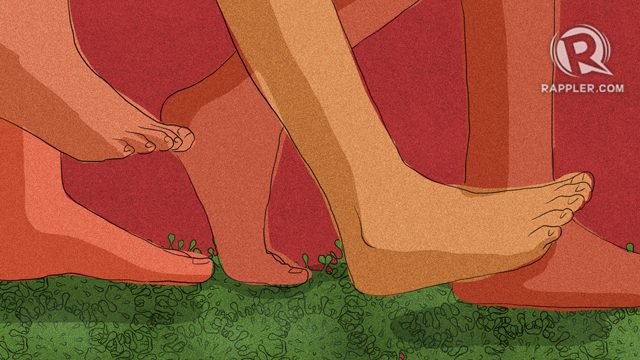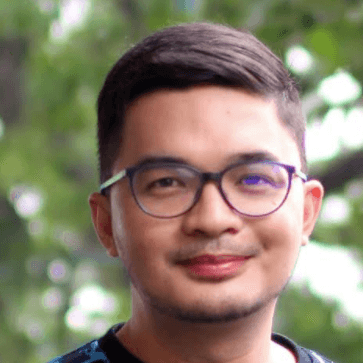SUMMARY
This is AI generated summarization, which may have errors. For context, always refer to the full article.


Every narrative has a counternarrative. In the prevailing urban-centric discourse on the COVID-19 pandemic, stories from the provinces are often filtered through the optics of the central government and Metro Manila’s experience of the crisis. No wonder the national government responded to the surge in the COVID-19 cases in Cebu with stricter, highly militarized quarantine measures. For the government, the pasaway (disobedience verging on recklessness) in Manila is the same pasaway in Central Visayas and elsewhere in the country. And when rural areas get sustained attention from mainstream media, people in the countryside are often reduced to “frontliners” anointed to feed the largely urban population in the time of a pandemic.
When our diverse narratives of COVID-19 — that is, our stories of what the pandemic is, who the main characters are, and how the story should unfold — are simplified into a single plot by an all-seeing state or a powerful group of people, authoritarian measures that benefit some while making others more vulnerable tend to be justified.
In the 1979 groundbreaking book of Filipino rural sociologist par excellence, Gelia T. Castillo, titled Beyond Manila: Philippine rural problems in perspective, she underscored the importance of “rural mindedness,” i.e., taking into account the experiences, emotions, and social location of people in the rural areas, in the pursuit of a more just and equitable path to national development.
Four decades after and as the country struggles to survive a pandemic, Dr. Castillo’s advice still rings true. We need to be more mindful of how people and local institutions in the countryside respond to and are affected by the pandemic. This is paramount particularly now that COVID-19 accelerates in some regions in the Visayas and Mindanao. (READ: [OPINION] Rural societies and the coronavirus pandemic)
But how would the pandemic look like if viewed from the countryside?
Conjoined fates
Hours after President Rodrigo Duterte declared a Luzon-wide lockdown on March 16, groups of migrant workers in Metro Manila, mostly men employed in construction work, began to travel on foot in an attempt to return to their provinces, miles away from the country’s capital. The exodus of Filipino internal migrant workers typifies the conjoined fates of cities and the probinsya even in the time of a pandemic.
It is not a connection that springs from an imagined faraway place where rich urbanites and artists go for solace and inspiration. Rather, it is a place born out of decades of neglect, the birthplace of many who have left to write their own destiny elsewhere, and the only place they can go back to when a crisis as deep as the COVID-19 pandemic exposed society’s perverse development trajectories.
When COVID-19 brought the Philippine economy to a near-standstill, the crisis laid bare the fragility of a consumption-driven service economy that thrives on cheap, precarious labor of internal migrant workers. With no jobs and network of social support to keep them afloat, and with very limited rights to demand for city government subsidies, many of these informal workers scrambled to go home.
But it would take the demise of Michelle Silvertino for the national government to heed the call of tens of thousands of stranded workers in the country’s capital. For many informal rural-to-urban migrant workers who have endured the harsh realities of being second-class citizens in cities, the protection from a pandemic is far from being a public good. (READ: [OPINION] Can Balik-Probinsya, Bagong Pag-Asa help stranded Filipinos?)
Outside the cities
But the tragedy of those who fled is only part of a bigger story that COVID-19 is unraveling about the countryside. Some rural communities find strength in traditional sources of social cohesion and shared experiences of responding to crisis. In the town of Sadanga, Mountain Province, Mayor Gabino Ganggangan refused to receive relief food packs from the national government as the local officials uphold the long-held tradition of the Sadanga Indigenous people of having the kadangyan or the wealthier members of the community open up their rice granaries to the poor in times of crisis. (READ: [OPINION] Putting the ‘community’ back in the enhanced community quarantine)
The pandemic also revealed people’s attachment to a place and sense of belonging, which ignited countless examples of collective action to help the most vulnerable groups in the villages, towns, and provinces where they come from. From the Filipino word ambag, which means one’s share to a collective affair, the Batch 2011 graduates of Oriental Mindoro National High School mobilized an online fundraising Ambagan para sa Kalusugan (Ambagan for Health) to provide rice and fresh vegetables to hundreds of poor families and personal protective equipment to frontline health workers in their home province.
For Eric Balois, a barista in a local coffee shop just outside the University of the Philippines Los Baños where I teach, the COVID-19 crisis made him rediscover assets that he possessed all along after losing his job and was forced to return to their hometown of Infanta in Quezon province.
During the lockdown, Eric kept himself busy growing vegetables around their house. Even the roadsides are lined up with trellises of beans. “Mas maganda dito sa Infanta at hindi binibili ang pagkain, fresh pa. Talagang ‘pag diyan sa Los Baños lahat ay bili,” he said.
(It’s better here in Infanta. You don’t have to spend for food, which always comes fresh. In Los Baños, everything has a price)
While these accounts somewhat defy the tropes of vulnerable, disaster-stricken rural areas, one can find unequal levels of resilience and vulnerabilities within the rural communities, just like in any other places in the country.
For Marlon Dalipe, a construction worker who walked for 5 days from Cavite to his hometown of Gallego in Camarines Sur, the pandemic felt worse than the typhoons that frequently hit the Bicol region. It took weeks before the fatigue and the soreness of his feet went away. For almost 4 months, he ekes out a living from fishing and sometimes from river sand quarrying. Because he earns very little compared to his araw or daily wages from construction work, he doesn’t consider fishing a real job. “Para lang akong naglalaro,” (It’s like I’m playing) Marlon said in a disheartening tone.
Some technocrats prefer the likes of Marlon to shift from the agricultural sector in the rural areas to another low productivity sector in the urban areas. They equate such action to resilience. But such view of resilience elides social injustice and inequality that many communities in the countryside have endured for decades. How is he supposed to react to the Balik Probinsya program for the urban poor when he himself could not even find a job in his birthplace?
Amid the uncertainties of whether he can still go back to construction work in Manila or in the Calbarzon region, Marlon still hopes for a better future. “Sana magkatrabaho na ako, ‘yung pangmatagalan. Kung mas malapit, mas maganda.” (I hope to find a job, one that is more permanent. If it’s here [in Bicol], the better).
Whole-of-nation approach…whose nation?
There is much to learn about the link between COVID-19 and the demographics, geography, local politics, and culture in places beyond the confines of Metro Manila and urban Luzon.
In areas that are not so well connected to road networks and digital infrastructures, fewer jobs might be amenable to the modern notion of “work from home.” Thus, local governments should vigorously support home-based industries and community-driven livelihoods by providing organized groups and networks of households with financial and technical assistance and connecting them to wider markets.
These efforts to promote local resiliency should be complemented with national-level policy changes that are protective of our rural economies.
The Department of Agriculture’s emergency response to the pandemic along with new forms of social solidarities that emerged to make agricultural supply chains more fair suggest that better alternatives to the anti-poor neoliberal policies of the past are possible.
The “whole-of-nation approach” that the Inter-Agency Task Force (IATF) for the Management of Emerging Infectious Diseases constantly invoke in its resolutions will only have meaning to the entire nation if the values, experiences, and stories of diverse communities, especially those historically disempowered by existing social and institutional structures, are reflected in the governmet responses to the crisis. Only then can the protection from a pandemic be a public good. – Rappler.com
Winifredo Dagli is an assistant professor at the Department of Science Communication, College of Development Communication, University of the Philippines Los Baños. He’s also a PhD candidate in rural studies at the University of Guelph.
Add a comment
How does this make you feel?
There are no comments yet. Add your comment to start the conversation.